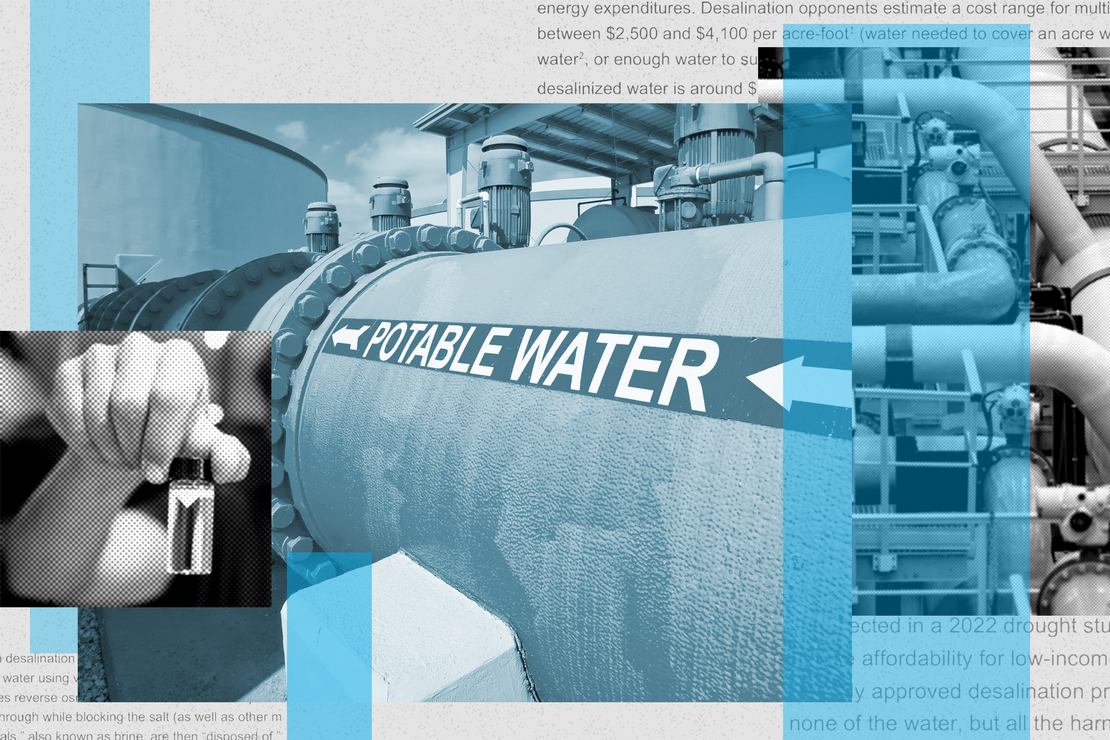

POLITICO illustration/Photos by iStock, Getty, Food & Water Watch
Panic over saltwater intrusion in the Mississippi River threatening drinking water supplies in major cities and an ongoing drought parching the West have some officials weighing a controversial solution — desalination.
But the process of removing salt from water to make it potable comes with a variety of drawbacks that complicate widespread viability.
“It is costly to build and operate desalination plants,” said Mary Grant, a campaign director with the group Food & Water Watch, who added that while the practice has been “a hot topic” in drought-ridden states like California, “its main hurdles have been cost and environmental impacts.”
Countries like Saudi Arabia, Israel and the United Arab Emirates all operate desalination plants that help provide drinking water. In the U.S., plants are scattered across states with saltwater intrusion problems and drought concerns, namely in Florida, California and Texas.
It is unclear how many facilities are currently operational, but a 2018 report from the U.S. Bureau of Reclamation found there were more than 400, with around half those being operational.
Reclamation noted via email that it does not compile data on who relies on desalinated water, as that varies “from individual water supplier to water supplier.”*
Desalinated water typically makes up only a portion of a water supply’s portfolio, even in places like San Diego County, Calif., home to the biggest plant in the country. Another large facility, Tampa Bay Seawater Desalination, provides up to 25 million gallons per day of drinking water for a region of more than 2.5 million people — but similarly supplies only up to 10 percent of the area’s needs.
Despite the limited benefits to water supply needs, new or exacerbated environmental challenges have helped bring desalination under broader consideration elsewhere.
For example, drought impacting the Mississippi River coupled with a long history of dredging by the Army Corps of Engineers has helped drive saltwater intrusion for the second year in a row, threatening drinking water in populous cities like New Orleans.
Grace Birch, a spokesperson with the Sewerage and Water Board of New Orleans, said that the city is “confident that long-term solutions can be accomplished” at a reasonable cost and with input from state and federal holders.
How? Sewerage and Water Board of New Orleans officials have pointed to desalination as a significant option on the table.
But even as New Orleans and other areas explore desalination, obstacles remain, and those drawbacks could make […]
Full article: www.eenews.net
Clean water is essential for life, yet millions of Americans unknowingly consume contaminants through their…
Human brains contain higher concentrations of microplastics than other organs, according to a new study, and the…
From the Office of the Governor: In anticipation of a multi-day, significant atmospheric river in Northern California,…
From Governor Newsom: Scientists, water managers, state leaders, and experts throughout the state are calling…
Photo: A harmful algal bloom in Milford Lake, Kansas, made the water appear bright green.…
An expanded plastic foam coffee cup is at a donut shop in Monterey Park, California.…